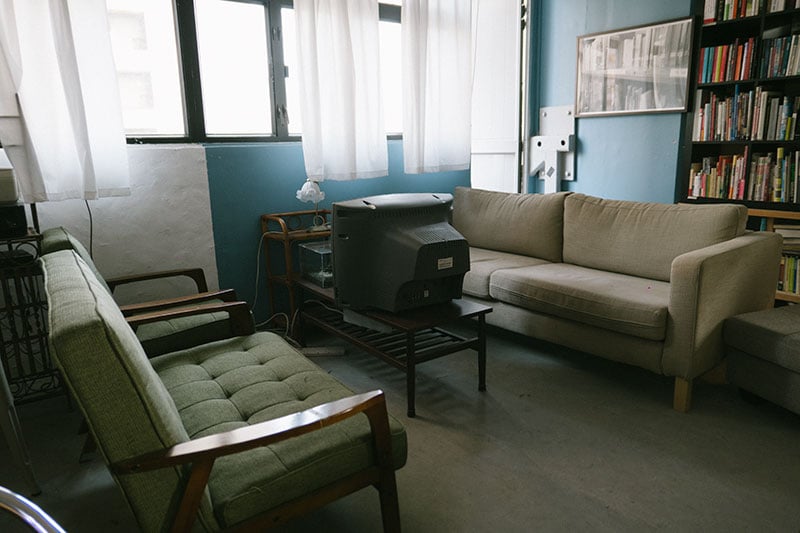Determined to provide a space for creative discussion, experimentation and the sharing of ideas, Hong Kong-based Linda Lai opened her cafe and studio Floating Projects to encourage experimentation in art.
Previously studying for various MA and PhD programs around the world, it was the Umbrella Movement in Hong Kong in 2014 that changed the direction of Linda Lai. Worried at the lack of places where students in her city could come to exchange views and indulge in their creativity, she set out to provide just that with her cafe and studio Floating Projects.
Wong Chuck Hang, an area once known for its concrete factories, has recently garnered plenty of hype amongst the creative community with its ever-growing hub of art galleries, fashion studios and independent cafes. So, launching her cafe and collaborative arts space Floating Projects in this emerging art district made total sense for founder Linda Lai. The fact that the neighbourhood was already very developed in terms of its creative scene was a plus, as it meant that she didn’t have to look too far to find an audience for her young artists.
It was Hong Kong’s Umbrella Movement in 2014 that inspired her to reinvent Floating Projects – a concept she had previously run and shared with three friends in a different location. For Linda, the peaceful protest seemed to expose many hidden problems and feelings shared amongst a great deal of the Hong Kong populace. And so, in 2015, she revived Floating Projects in its new location as a place for creatives to experiment, showcase their art and gather for discussions. “So many students in Hong Kong give up the arts straight after graduation so as to pursue more socially acceptable and financially secure ventures”, she explains. “Others give it up simply because they don’t have the space to hone their craft. Floating projects aims to provide that space.”

There is a definite emphasis on education and experimentation under her watch. The studio runs workshops, and every so often, Linda invites an artist to present a solo show, during which the exhibiting guest will be critiqued. First, there is an inner group appraisal led by a variety of experts ranging from animators and graphic designers to filmmakers and artists, and then there is a general discussion which the audience participates in. When asked if there was a criterion for choosing her artists, Linda replies, “I believe in acquaintances. People may criticise this, but as long as we have an open mind, acquaintances are the most solid type of ties that will sustain the life of an organisation.” The purpose of Floating Projects is, after all, to give graduates the chance to focus on being creative, so having a list of criteria would contradict the collective’s mission statement. “Usually, I just look at a student and feel something in this person. If they are ready to take risks and ready for a challenge, I guess you could say that those are my criteria.”
Since 2015, there have been 12 artists that have been given exposure through Floating Projects. One, in particular, is video installation artist Kin Choi Lam, a former student of Linda’s, whose work is now being collected by art lovers in Europe and the US. The space has also proven to be a surprising hit with foreigners, with artists from Holland, Belgium, the US and Australia asking to exhibit in recent months.
Impressively, Floating Projects remains completely self-funded by Linda, who relies on donations made from their in-house cafe, as well as from events. She also has plans to move soon into The Jockey Club Creative Arts Centre, an in-demand art community and multi-disciplinary artists’ centre in Shek Kip Mei. The industrial building had been empty ever since the 1970s but, through a sizeable donation of HKD 94.4 million from the Jockey Club, reopened its doors in September 2008, providing affordable venues for artists and art groups. As she joins forces with this venue and its wider community, Linda’s message encouraging the focus on art for art’s sake can only gain traction.






